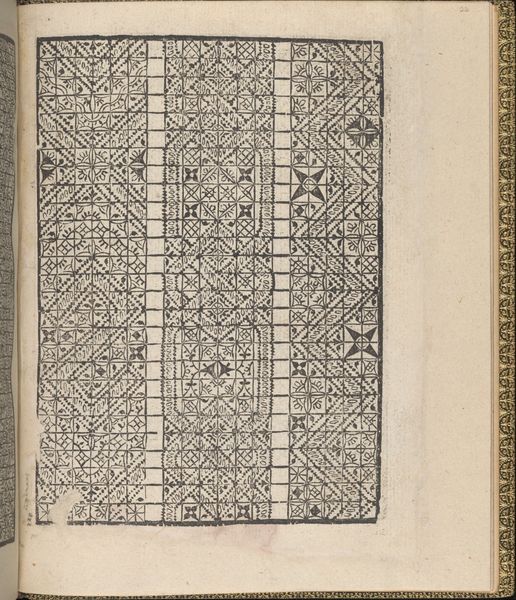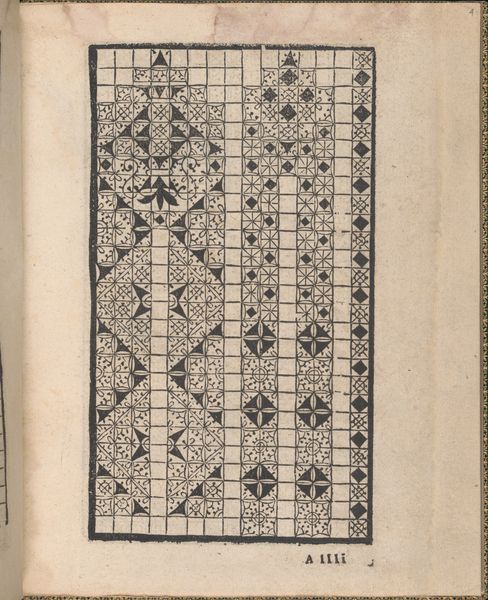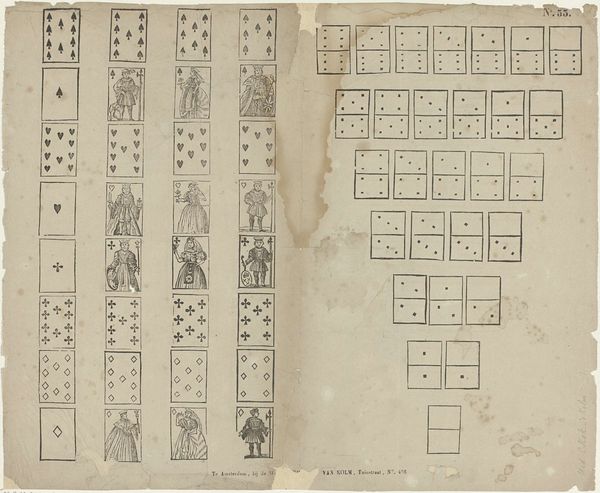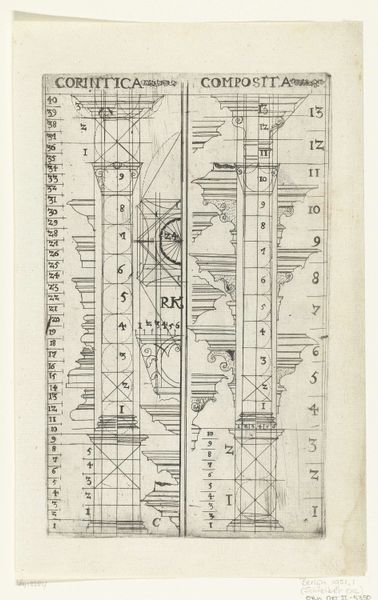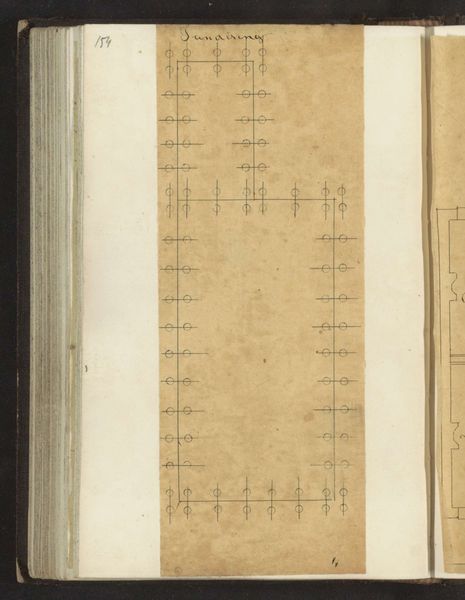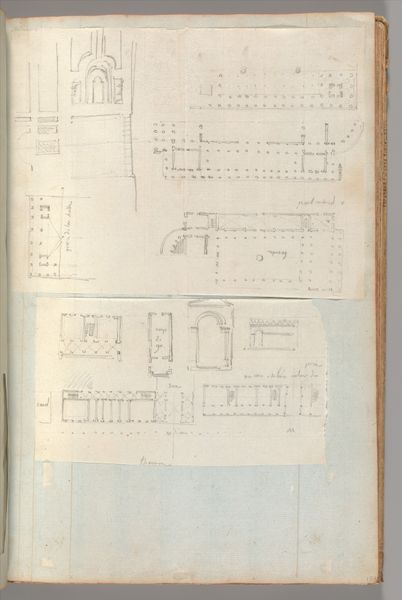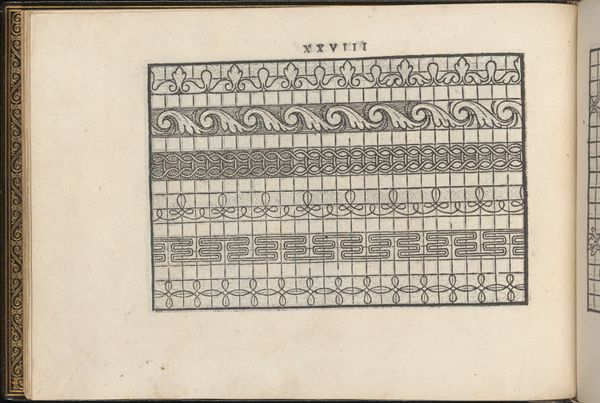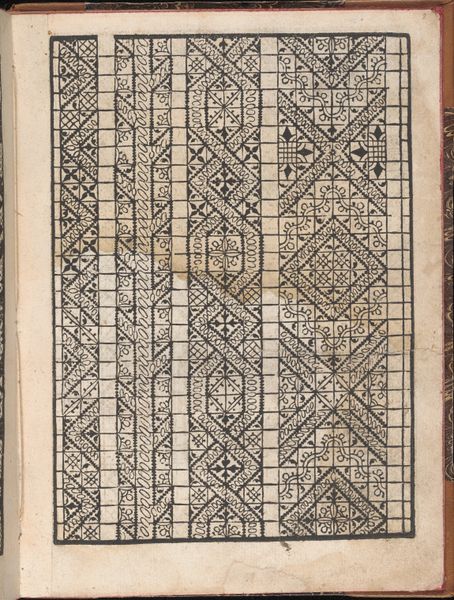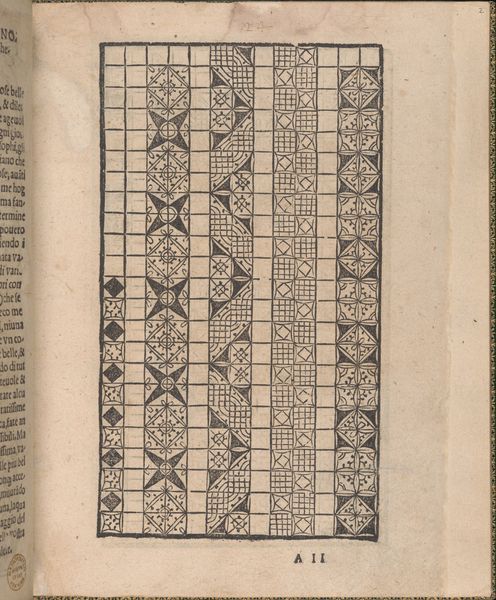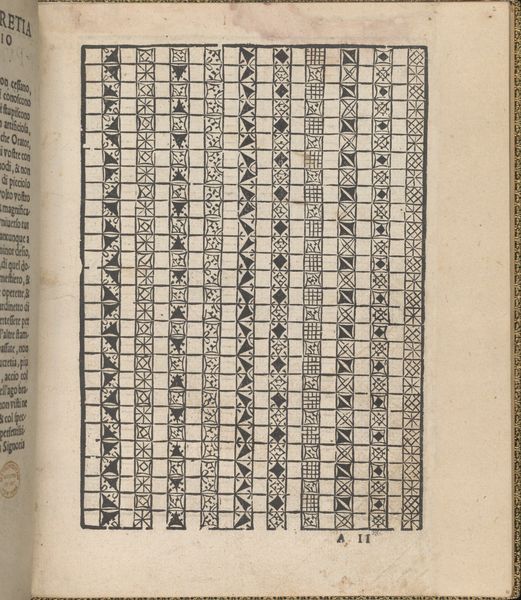
drawing, paper, graphite
#
drawing
#
art-nouveau
#
hand-lettering
#
sketch book
#
hand drawn type
#
hand lettering
#
paper
#
personal sketchbook
#
hand-written
#
journal
#
geometric
#
sketch
#
geometric-abstraction
#
graphite
#
sketchbook drawing
#
sketchbook art
#
modernism
#
small lettering
Copyright: Rijks Museum: Open Domain
Editor: This is Gerrit Willem Dijsselhof’s "Jaarkalender," circa 1901, a drawing in graphite on paper, currently housed at the Rijksmuseum. It strikes me as quite unusual, almost like an infographic before its time! How would you interpret it? Curator: Well, the "Jaarkalender" gives us insight into the creative process and social context around 1900. The late 19th and early 20th centuries saw burgeoning interest in not only capturing reality but also representing abstract concepts like time. The sketch-like quality signals it's likely a private document, possibly studies for a larger project, or something intimately tied to the artist's personal schedule and interests. Editor: I see. So the calendars aren't meant to be artworks themselves, but possibly studies? Curator: Exactly. The question is, how might Dijsselhof's personal project reflect or even challenge prevailing notions of timekeeping, visual culture, or modern organization emerging in the Netherlands then? Its existence challenges art history’s typical focus on “finished” gallery pieces. Do you notice how geometric forms intersect with textual information? Editor: Yes, it’s all so precise, yet informal at the same time. What do you mean? Curator: Think of the broader cultural changes. New forms of record-keeping and rationalizing time became intertwined with modern bureaucracy, but were also internalized in private life. So the geometric abstraction might reflect how abstract forces of modernity were seeping into artists’ and personal lives. Editor: That makes me see the work so differently. It is more than just dates; it reflects the mood of an era. Curator: Exactly! The piece demonstrates how individual creation often engages deeply with contemporary social, cultural, and political currents. Editor: That’s such a useful point. Thanks.
Comments
No comments
Be the first to comment and join the conversation on the ultimate creative platform.
